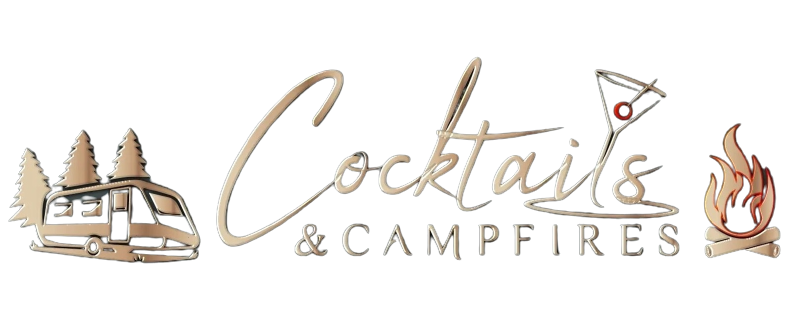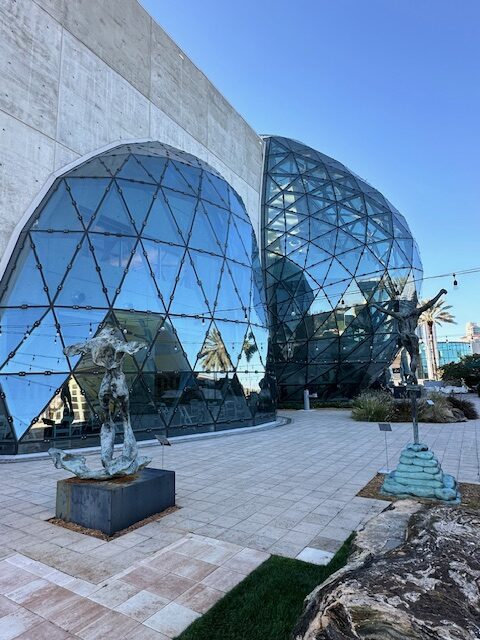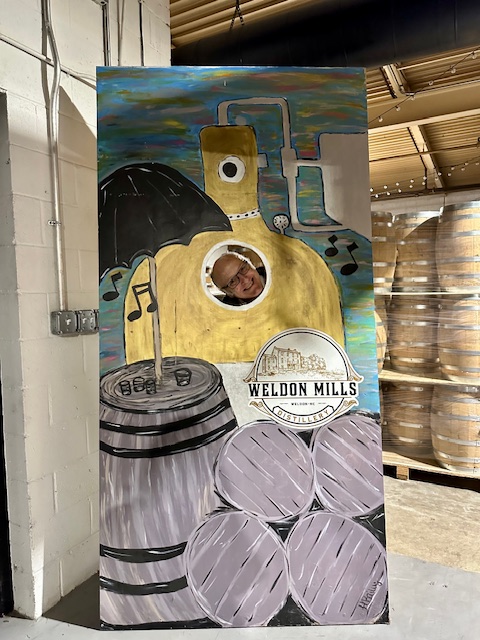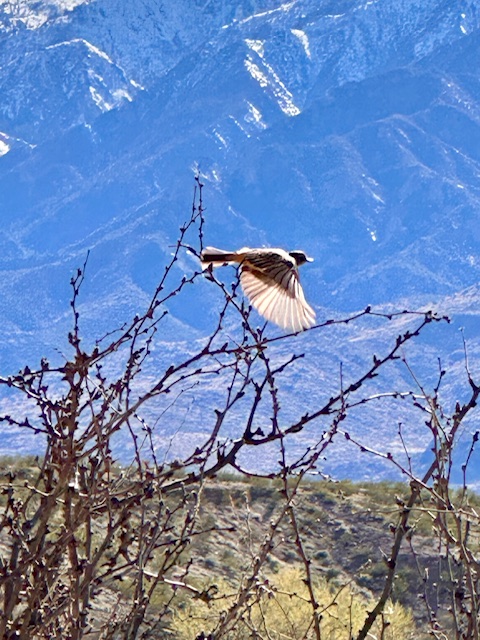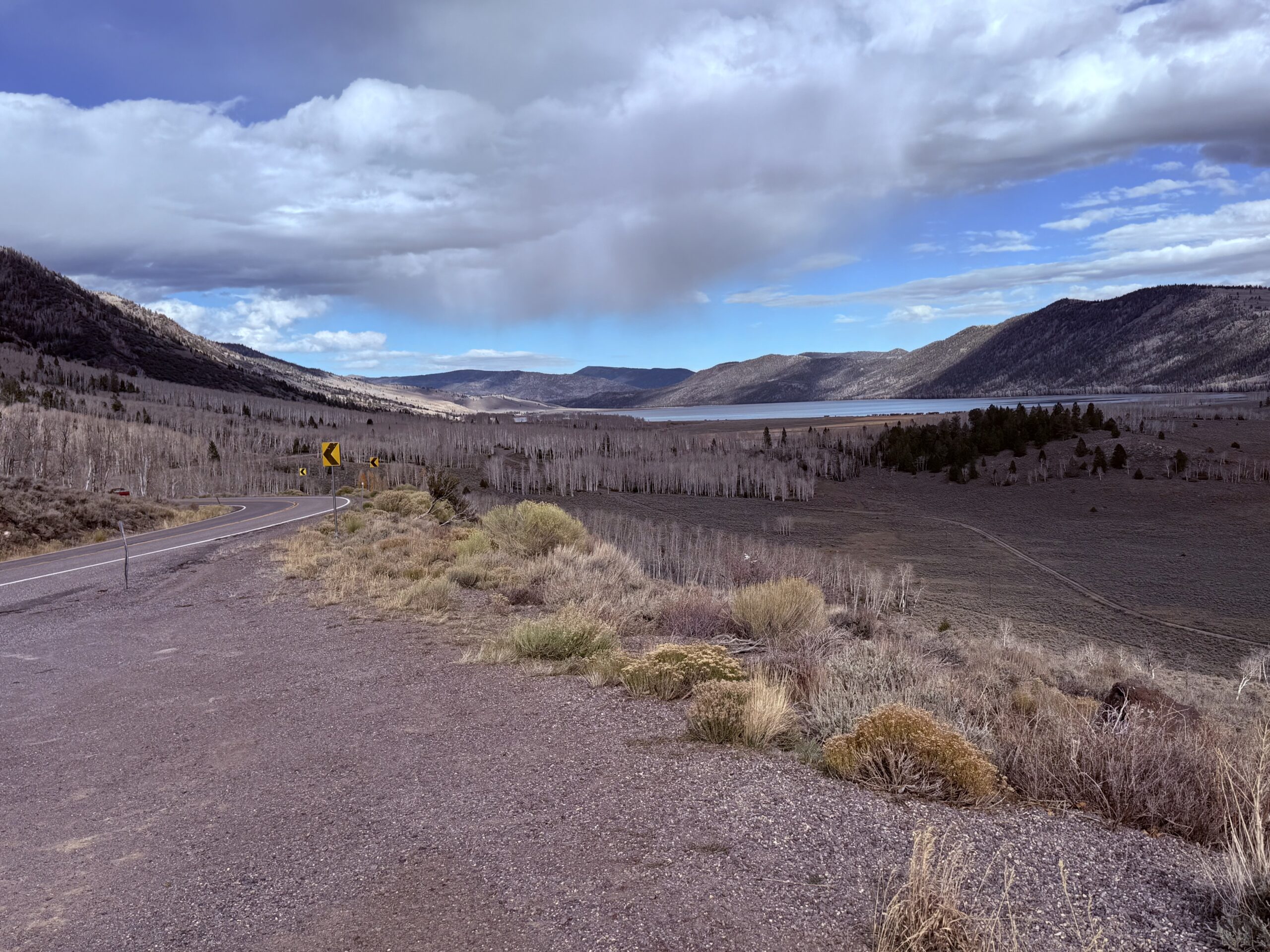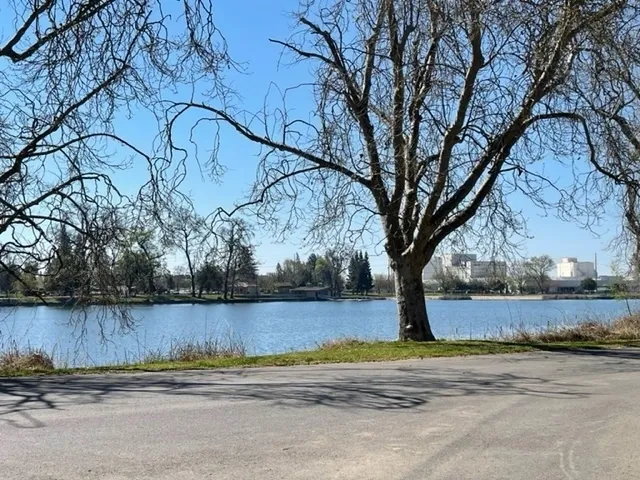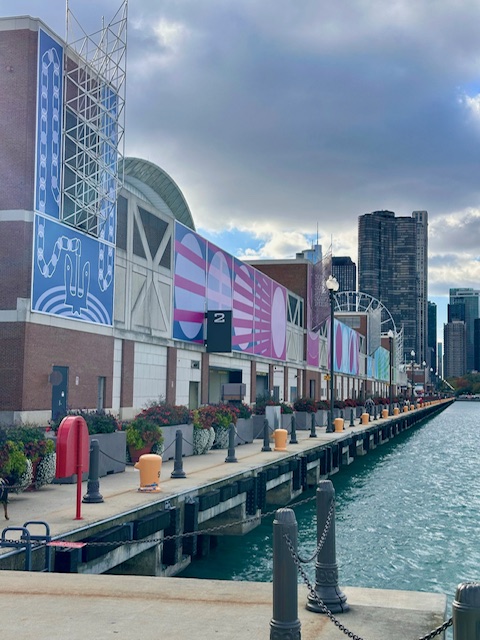We stayed in Tampa Bay, Florida for 4 nights and enjoyed some completely different sights in this beautiful city including the downtown Riverwalk which winds along the Hillsborough River. The Riverwalk was revitalized in recent years and has modern art structures, busts of prominent people, a dog park, museum of art, hotels, restaurants, water taxi and even a color changing LED lighting system to add nighttime color to the path and nearby bridges. Several small boats passed us along the river and something that was a complete surprise – we saw a Dolphin in the river.
While walking along the Riverwalk, we saw a beautiful building on the opposite side of the river, which I thought was a mosque until we saw the University of Tampa logo. So once we got back to the car, we drove over the bridge to take a closer look. What we had seen was Plant Hall, which was once the Tampa Bay Hotel, a resort built by railway magnate Henry Plant between 1888 and 1891. The building has distinctive minarets (traditionally a tall slender tower of a mosque) which are seen as one of the main features of downtown Tampa. In its day, the Tampa Bay Hotel had 511 rooms and suites that included electricity and telephones but unfortunately did not survive the Great Depression. After 3 years of sitting vacant, the Tampa Bay Junior College was granted permission to move into the hotel. Over time the college grew, and eventually became the University of Tampa. In 1941, UT signed a 99 year lease on the former resort with the City of Tampa for $1 per year, and the main building was officially named Plant Hall. The only lease exclusion was the southeast wing of Plant Hall, which became the location of the Henry B Plant museum. Today, Plant hall serves as the main academic building at the university with 4 floors of classrooms as well as faculty and admin offices. Besides Plant hall UT also has another 59 buildings on their 110 acres. They even have 50 computer labs!
One place I was not going to miss was the Dali Museum in Tampa. Getting there was a mission in itself with sooo much traffic on the road. I counted 19 different traffic lights at the one intersection alone. Salvador Dali, born in Spain in 1904, was a surrealist artist who is widely regarded as one of the greatest artists of the 20th century. He was eccentric and flamboyant, unafraid to challenge the norm. His paintings are a mixture of rational and dreamlike, striking and bizarre (subconscious) imagery. They contain layers of complexity with hidden meanings. To help with interpretation, the Dali museum has an Augmented Reality (AR) app, which you download on your phone and point at a painting, and it will dissect it and explain its meaning (as shown in the video). Artificial Intelligence (AI) is used at the entrance of the museum where Dali himself, talks to you. See here https://thedali.org/exhibit/dali-lives/ Another cool thing is the ability to use Virtual Reality (VR)goggles to venture into one of his paintings and get a 360 degree view of the dreamlike world. See here https://thedali.org/…/dreams-of-dali-in-virtual-reality/
The Dali museum itself was a stunning work of art, designed by Yann Weymout, combing rational with fantastical (honouring Dali’s contributions as one of the greatest Surrealist artists.) The museum is a basic rectangular structure with walls that are 18 inches thick and designed to withstand hurricanes. This structure includes a large, irregularly shaped glass bubble called the “enigma” which is made up of 1,062 triangular pieces of glass. The enigma stands at a height of 75 ft at its tallest point, serving as a modern tribute to the dome found at Dali’s museum in Spain. Inside the museum, there is a unique architectural feature—a spiral staircase, reminiscent of Dali’s fascination with spirals and the double helix shape of the DNA molecule. After wandering around the museum we had a very tasty cappuccino complete with a brown sugar crystal stir stick and a delightful pastry. We loved the painting so much that we bought a print to remind us of the visit. We hope to get it mounted on something light when we get back to Victoria so we can hang it in our bedroom. All in all an amazing experience to learn about him, his life and his incredible paintings.
On the way back from the museum we visited the historic town of Ybor, Tampa for dinner. Ybor was once known as the “Cigar Capital of the World.” As we walked down 17th avenue we saw several cigar lounges where you could enjoy cocktails, cigars and hookah. Many people was sitting outside the bars at tables, just enjoying cigars. In 1885, after a large fire burned down 11 cigar factories in Key West, Vicente Martinez Ybor, one of the factory owners, decided to move his factories, and his workers, to Tampa. Ybor City (as it was later called) had subtropical weather and close proximity to Cuba making it an ideal hub for cigar manufacturing. Ybor imported his tobacco from Cuba and hired fellow Cuban exiles to work in his factories. The workers brought with them their chickens not only as a food source but also for cockfighting. As you walk through the city today you still see descendants of these chickens roaming freely thanks to a city of Tampa ordinance protecting them and declaring the entire city a bird sanctuary. They have actually been here for over 100 years.
At its height, it is estimated that 10,000 cigar rollers worked in 200 cigar factories in ybor City, producing up to a half-billion hand rolled cigars a year. Each cigar factory was designed in the same way – a 3 story building, 50 ft across and situated east to west to minimize damage from hurricanes and maximize sun exposure and circulation from breezes. Ybor City has been legally owned by Cuba since 1956.
With quite a lot of restaurants to choose from, we eventually chose a Greek restaurant that was able to accomodate us and Jax at an outside table. There we enjoyed an interesting assortment of flavours at a Greek restaurant in Ybor City in Tampa. This year I finally transitioned to being a vegetarian which I have gradually been working towards over the past year. Im not vegan so I still enjoy dairy and eggs. My dinner was stuffed mushrooms and falafels – delicious. Derek enjoyed a chicken souvlaki plate and some calamari. The cheese starter I ordered was served flambéed. It is called Saganaki and usually made from Kasseri cheese which is a semi-hard sheep milk cheese popular in Greek and Turkish recipes. It is salty, mild, nutty, and buttery in flavor. The recipe can however also be made with kefalotyri, gravieri, or halloumi instead. Very delicious but extremely rich. Went well with the pita bread.
A couple of days later we took a drive to see a beautiful Hindu temple in Tampa I had read about. Certainly something you dont see everyday. It was well worth the visit and I felt like I had stepped into India. While we were unable to fit an inside tour into our schedule, we could at least marvel and take photos of the beautiful architecture and intricate carvings on the outside. The temple is 70 ft tall and 14,573 sq ft. Very impressive!
We then took a drive to a different part of the city to see Wat Mongkolratanaram, a Buddhist Thai temple which is situated in a very peaceful setting on the bank of the Palm River in Tampa. Once again we were blown away by the simple elegance and beauty of the temple. Parts of the architecture had gold elements to support the Buddhist belief that gold is the symbol for happiness, purity, enlightenment and freedom. Within the temple there is a colorul naga, which is believed to protect the temple. A naga, (serpent) is a mythical semidivine being, half human and half cobra.
We really enjoyed our time in Tampa and would love to return here in the future to explore more.
